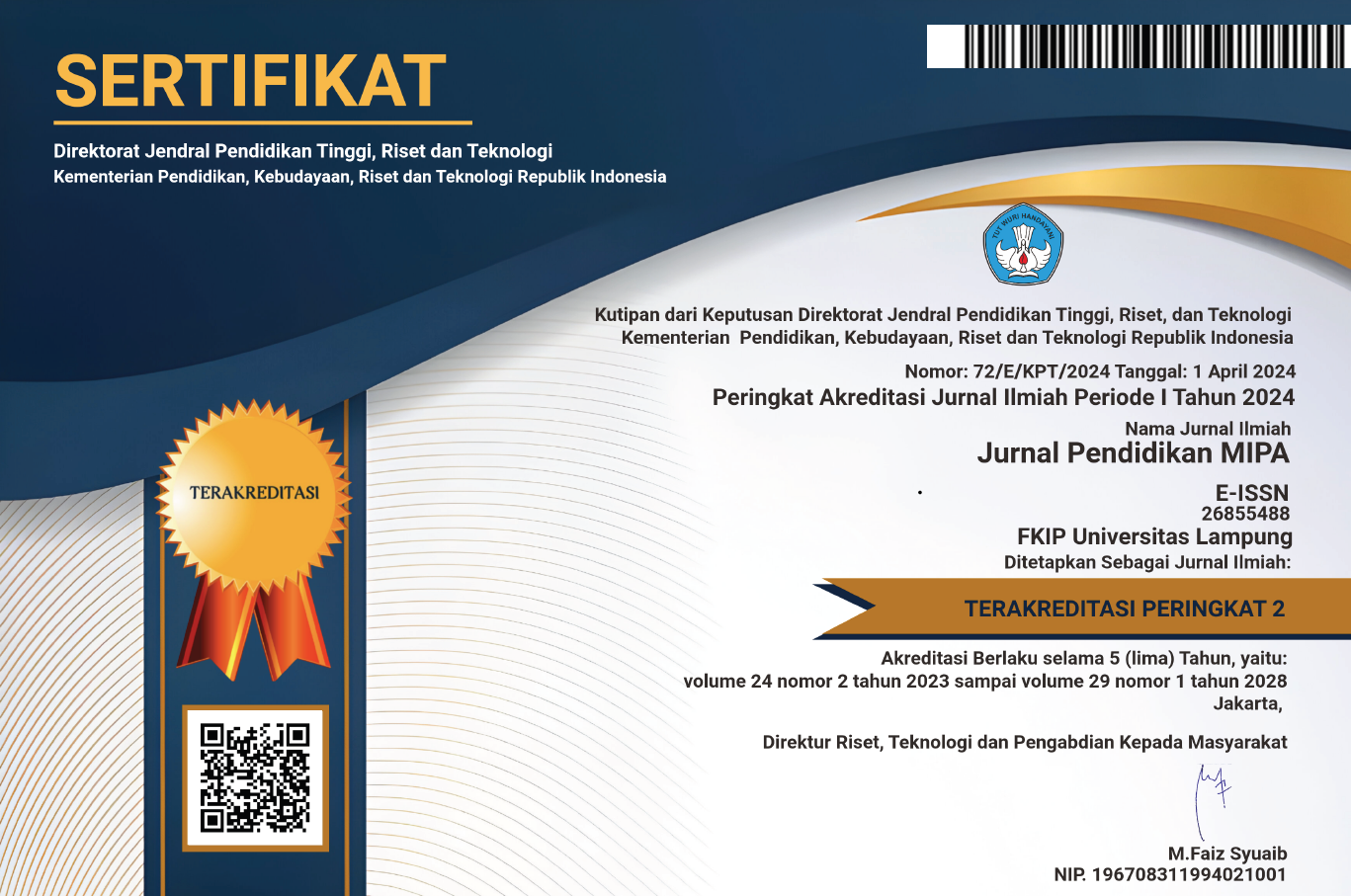Using an Indonesian-version of the Green Chemistry Attitude Scale to Evaluate College Students' Awareness towards Environment
 Country:
Country:
(1) Universitas Lampung, Indonesia
(2) Universitas Lampung, Indonesia
This study aims to evaluate the concern of prospective chemistry teacher students towards the environment using a questionnaire. green chemistry attitude. The data obtained were analyzed using exploratory factor analysis (EFA) techniques to determine the contribution of each item, the level of student mastery, and the interrelationship between the dimensions of green chemistry attitudes. The research sample was 200 students who were taken by random sampling technique from the total number of students from the Department of Chemistry Education, FKIP, University of Lampung. The results showed that the 15 statement items in the instrument grouped into 4 factors, namely prevention, design for energy efficiency, safer solvent and auxiliaries, design for degradation. Each statement item and factor have a fairly good validity and reliability in terms of the standard rotated factor loadings and the Cronbach's alpha coefficient. Furthermore, the mean and grandmean analysis revealed that most of the prospective students for chemistry teacher at FKIP Unila had a positive attitude towards the concept of recycling in chemical processes and the use of solvents that were safe for the environment. Each factor also shows a
strong correlation with each other in terms of the Pearson correlation coefficient. Finally, this instrument is highly recommended for further research in revealing teacher candidates' concern for the environment.
Keywords: green chemistry attitude scale, prospective chemistry teachers, factor analysis.
Anastas, PT, Levy, IJ, & Parent, KE (Eds.). (2009). Green chemistry education: changing the course of chemistry. American Chemical Society.
Anastas, PT, & Kirchhoff, MM (2002). Origins, current status, and future challenges of green chemistry. Accounts of chemical research, 35(9), 686-694.
Andraos, J., & Dicks, AP (2012). Green chemistry teaching in higher education: a review of effective practices. Chemistry Education Research and Practice, 13(2), 69-79.
Clark, JH (1999). Green chemistry: challenges and opportunities. Green chemistry, 1(1),1-8.
Collins, TJ (1995). Introducing green chemistry in teaching and research. Journal of Chemical Education, 72(11), 965.
Eilks, I., & Rauch, F. (2012). Sustainable development and green chemistry in chemistry education. Chemistry Education Research and Practice, 13(2), 57-58.
Hjeresen, DL, Schutt, DL, & Boese, JM (2000). Green chemistry and education. Journal of Chemical Education, 77(12), 1543.
Sharma, SK, Chaudhary, A., & Singh, RV (2008). Gray chemistry verses green chemistry: challenges and opportunities. Rasayan Journal of Chemistry, 1, 68-92.
Wenxiang, ZHU (2001). Green chemistry and Green chemistry Education [J]. Journal of Chemical Education, 1,000.
Levy, IJ, Haack, JA, Hutchison, JE, & Kirchhoff, MM (2005). Going green: Lecture assignments and lab experiences for the college curriculum. Journal of Chemical Education, 82(7), 974.
Reed, SM, & Hutchison, JE (2000). Green chemistry in the organic teaching laboratory: an environmentally benign synthesis of adipic acid. Journal of Chemical Education, 77(12), 1627.
Refbacks
- There are currently no refbacks.

This work is licensed under a Creative Commons Attribution-ShareAlike 4.0 International License.






